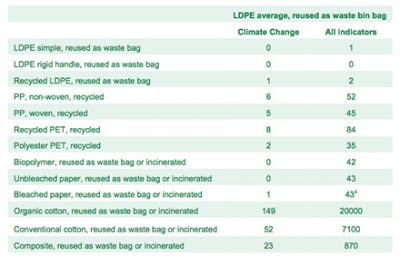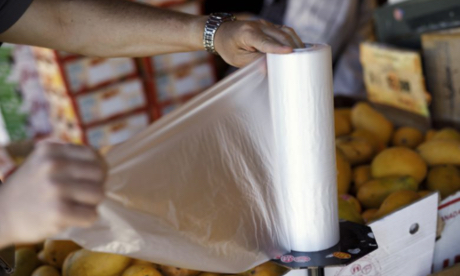Prime Minister Justin Trudeau recently announced his government will seek to ban many single-use plastic starting in 2021.
Although the final list of banned items is still undetermined, it will likely include plastic bags, takeaway containers, cutlery and straws.
To further justify the ban, Environment Minister Catherine McKenna cited images of marine wildlife being injured or killed as a result of plastic in our oceans.
It’s a hard-to-resist pitch.
No one wants to contribute to marine deaths as a result of plastic, and most of us don’t like the idea of plastic items taking over 1,000 years to decompose in landfills.
These concerns ultimately stem from worries about climate change, and the environmental problems that could arise as a result.
Unfortunately for the environmentally conscious among us, a ban on single-use plastics does almost nothing for the issue of plastics impacting ocean marine life, and does very little in terms of environmental impact.
Canadians are not significant polluters when it comes to marine litter.
Up to 95 per cent of all plastic found in the world’s oceans comes from just 10 source rivers, which are all in the developing world.
Canada on average, contributes less than 0.01 MT (millions of metric tonnes) of mismanaged plastic waste.
In contrast, countries like Indonesia and the Philippines contribute 10.1 per cent and 5.9 per cent of the world’s mismanaged plastic, which is upwards of 300 times Canada’s contribution.
China, the world’s largest plastics polluter, accounts for 27.7 per cent of the worlds mismanaged plastic.
Canada, when compared to European countries like England, Spain, Italy, Portugal and France, actually contributes four times less in mismanaged plastic.
The only European countries on par with Canada are the significantly smaller Sweden, Norway and Finland.
A plastics ban might sound productive in terms of plastics pollution, but the evidence doesn’t suggest that Canada is actually a significant contributor for mismanaged plastic, which means that a Canadian ban will do little to aid marine life devastatingly impacted by plastic pollution.
However, proponents will say we should still support the ban on the basis of trying to curb climate change.
Although noble, banning plastics doesn’t necessarily equate to better environmental outcomes.
In fact, some alternative products, although branded as green alternatives, have a significantly higher total environmental impact once the production process is factored in.
Take plastic bags for example, which are public enemy number one.
Conventional thinking suggests that banning single-use plastic bags will result in people using reusable bags, and that this reduction in plastic use will have a positive impact on the environment.

Calculated number of primary reuse times for the carrier bags in the rows, for their most preferable disposal option, necessary to provide the same environmental performance of the average LDPE carrier bag, reused as a waste bin bag before incin-eration.
Research from Denmark’s Ministry of the Environment actually challenged that conventional wisdom when it sought to compare the total impact of plastic bags to their reusable counterparts.
The Danes found that alternatives to plastic bags came with significant negative externalities.
For example, common paper bag replacements needed to be reused 43 times to have the same total impact as a plastic bag.
When it came to cotton alternatives, the numbers were even higher.
A conventional cotton bag alternative needed to be used over 7,100 times to equal a plastic bag, while an organic cotton bag had to be reused over 20,000 times.
We know from consumer usage patterns that the likelihood of paper or cotton alternatives being used in such a way is incredibly unlikely.
These results were also largely confirmed with the U.K. government’s own life-cycle assessment, which concluded that these alternatives have a significantly higher total impact on the environment. Continue reading
Sources
- Ministry of Environment Denmark: Life cycle assessment of green carrier bags
- Image: Financial Post
News category: Analysis and Comment.




